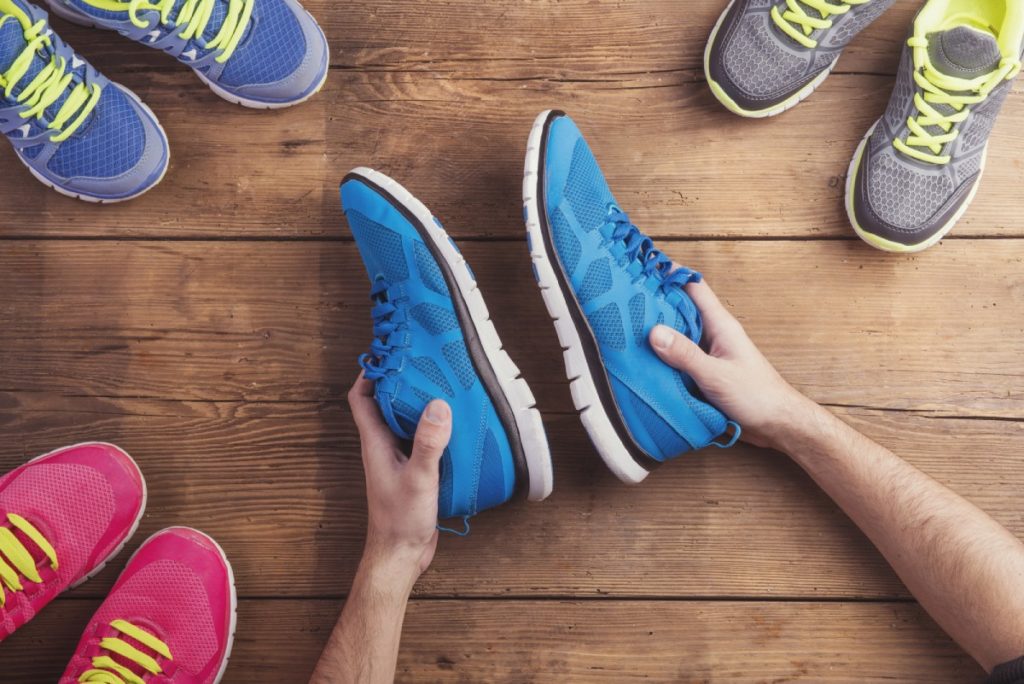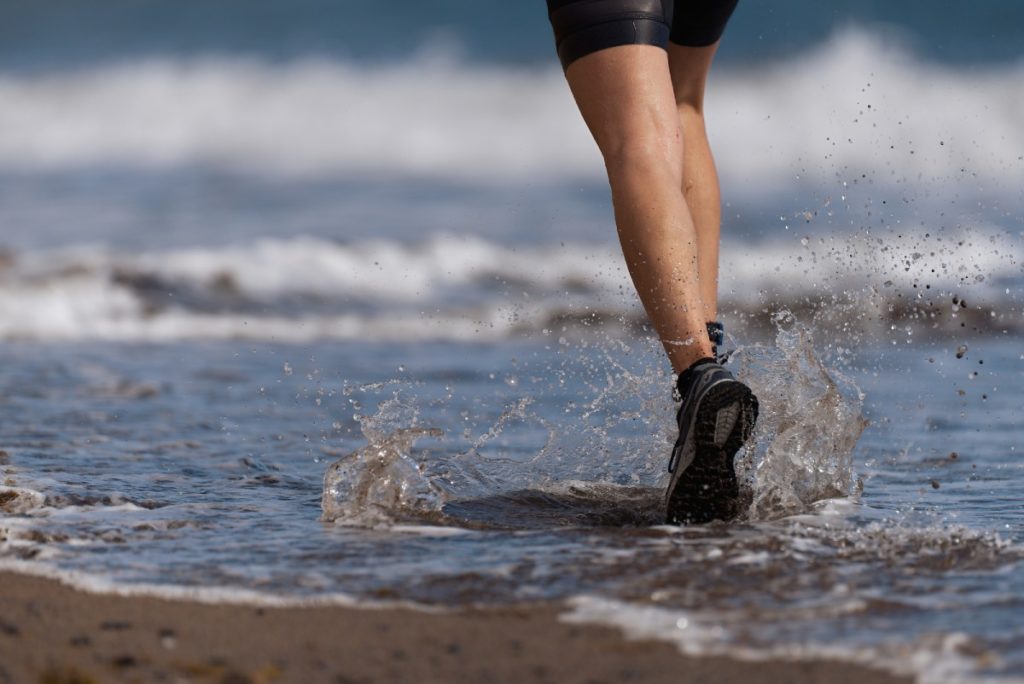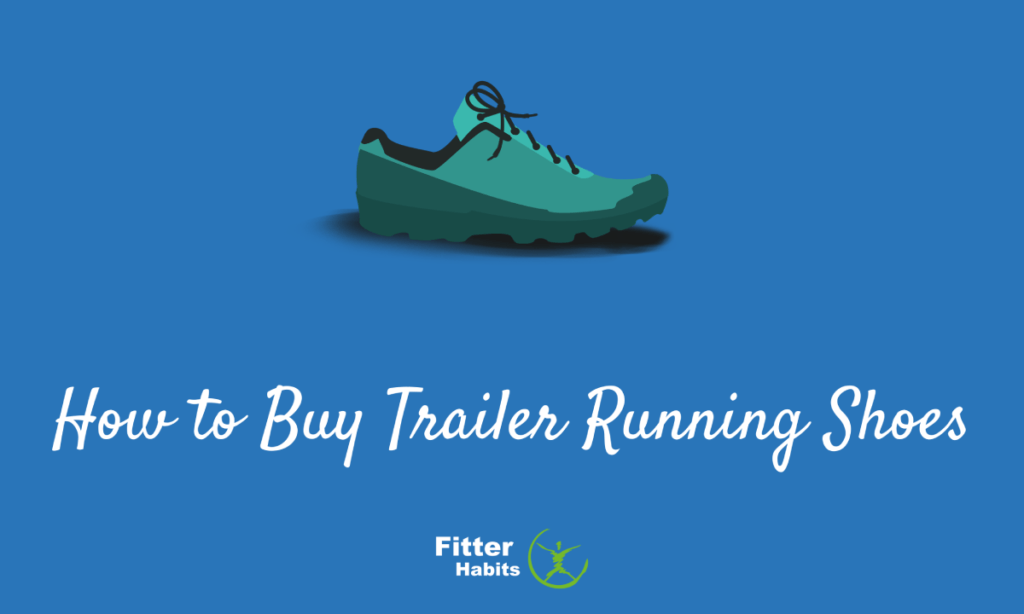If you’re the type of runner who likes to venture off the beaten path, then you’ll want to know how to buy trail running shoes that suit your needs.
If you typically stick to paved running paths, then a basic pair of running shoes will probably suit you just fine. However, if you like to get a little more adventurous with your runs, then you may find yourself in need of a more durable and rugged shoe. Specifically, a pair of trail running shoes can provide you with the added support, traction, and protection that you need to take things off the beaten path.
Still, not all trail running shoes are created equal—and there are some specific things you’ll want to look for as you shop for your ideal pair. By following the steps below, you’ll be well on your way to choosing a trail running shoe with confidence.
Contents
Step 1. Know the Types of Trail Running Shoes

Start with an understanding of the several different types of trail running shoes that are available. Most will fall into one of three categories: light trail, rugged trail, or off-trail.
A light trail running shoe is one that is designed for use on relatively uniform trails; this may include gravel paths, hiking trails, and paths with slight variation in surface material. These shoes will provide your feet with a little more protection and traction than a standard running shoe while remaining lightweight.
If you’re looking for a trail running shoe that’s designed for a little more adventure, then a rugged trail shoe may be right for you. This type of shoe should provide some added features to protect your feet, including toe guards and plates. You may also find features like more supportive uppers for added stabilization on rugged surfaces and varying tread patterns for a better grip.
For running on the rockiest and roughest of terrain, an off-trail shoe will be your best bet. These shoes will offer maximum protection and traction in tough conditions and are often waterproof, so you can run through creeks and streams with confidence.
Step 2. Decide on the Right Cushioning Level
Just as trail running shoes come in a few different types, they are also available with several different levels of cushioning. This usually ranges from a “barefoot” style (which offers minimal cushioning) all the way up to moderate or maximum cushioning.
The level of cushioning (also commonly referred to as “stack height“) you need will depend on your own personal preferences. If you prefer a more padded feel under your feet or if you do a lot of trail running over rocky terrain, then you’ll probably want a shoe with moderate or maximum cushioning.
On the other hand, if you prefer to develop a more “natural” feel of the trail beneath your feet, then a trail running shoe with a barefoot or minimal cushioning level may be ideal.
Step 3. Have Your Shoe Size Measured
Even if you plan on actually buying your shoes online, it’s not a bad idea to go into a physical shoe store and have your current shoe size professionally measured. This will help you get a better feel not only for your current shoe size but for other features (such as a wide fit) that you may want to look for as you shop.
When going in to have your shoe size measured for trail running shoes, it’s a good idea to go towards the end of the day. This is when your feet will tend to measure the largest.
Step 4. Consider a Waterproof Option

If you do a lot of trail running through creeks, streams, and other shallow bodies of water, it may make sense to shop for a waterproof trail shoe. Keep in mind, however, that these shoes tend to be a lot less breathable than shoes without a waterproof design.
Because of this, many trail runners may actually be better off choosing a trail running shoe with a breathable mesh fabric that will dry quickly if it gets wet.
Step 5. Try on Plenty of Pairs
Shopping for trail running shoes can be challenging because you can’t exactly “try them out” on a real hiking trail before you buy. With this in mind, it’s important to try on plenty of different pairs and to be aware of the shop’s return or exchange policy before you buy.
Some shoe stores, for example, will allow you to exchange your shoes if you’re unhappy with them within a certain period of time—even if you’ve already worn them.
The Final Word on How to Buy Trail Running Shoes
In addition to your “typical” running shoes, it’s never a bad idea to have a pair of quality trail running shoes to rely on when your adventures take you on the path less traveled. The key, of course, is knowing what to look for in a great trail running shoe.
By being aware of the different types of trail running shoes and what to look for in terms of fit/sizing, you can confidently purchase your first pair. From there, a quality set of trail shoes can last you for many months or even years to come.
FAQs About How to Buy Trail Running Shoes
Where to buy trail running shoes?
There are plenty of reputable places to buy trail running shoes both online and in-person. Ideally, you’ll want to stick with a shoe supplier that specializes in running shoes to ensure that you have the widest variety to choose from. Whether buying online or in-person, you’ll also want to be aware of the store’s return and exchange policy on shoes before buying.
Do trail running shoes make a difference?
Yes; if you plan on doing a lot of trail running, then having shoes specifically designed for this purpose can make all the difference. Specifically, the right pair of trail running shoes can provide you with the grip you need on tricky terrain while also protecting your feet from unpredictable elements.



